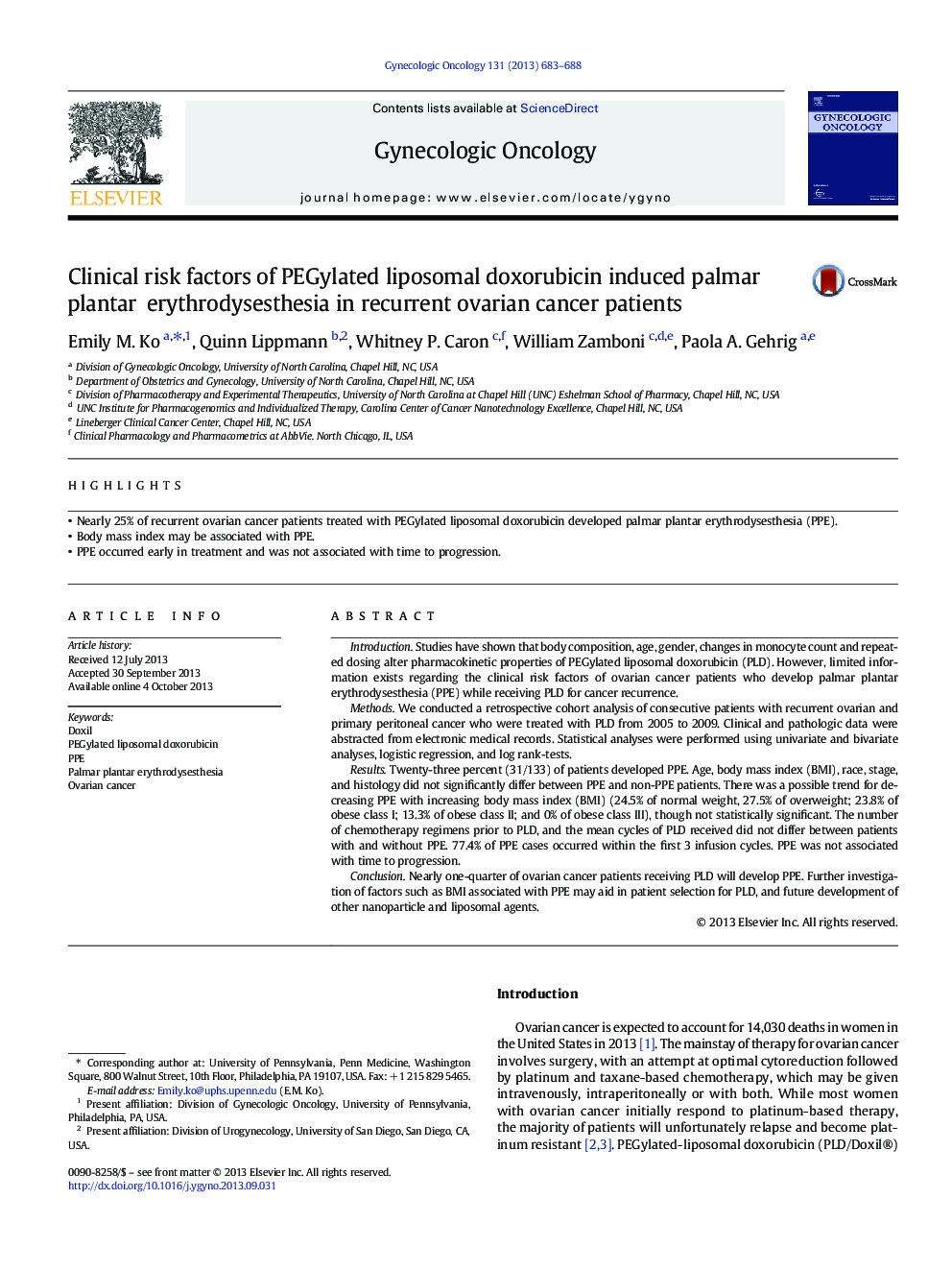| کد مقاله | کد نشریه | سال انتشار | مقاله انگلیسی | نسخه تمام متن |
|---|---|---|---|---|
| 3944730 | 1254225 | 2013 | 6 صفحه PDF | دانلود رایگان |

• Nearly 25% of recurrent ovarian cancer patients treated with PEGylated liposomal doxorubicin developed palmar plantar erythrodysesthesia (PPE).
• Body mass index may be associated with PPE.
• PPE occurred early in treatment and was not associated with time to progression.
IntroductionStudies have shown that body composition, age, gender, changes in monocyte count and repeated dosing alter pharmacokinetic properties of PEGylated liposomal doxorubicin (PLD). However, limited information exists regarding the clinical risk factors of ovarian cancer patients who develop palmar plantar erythrodysesthesia (PPE) while receiving PLD for cancer recurrence.MethodsWe conducted a retrospective cohort analysis of consecutive patients with recurrent ovarian and primary peritoneal cancer who were treated with PLD from 2005 to 2009. Clinical and pathologic data were abstracted from electronic medical records. Statistical analyses were performed using univariate and bivariate analyses, logistic regression, and log rank-tests.ResultsTwenty-three percent (31/133) of patients developed PPE. Age, body mass index (BMI), race, stage, and histology did not significantly differ between PPE and non-PPE patients. There was a possible trend for decreasing PPE with increasing body mass index (BMI) (24.5% of normal weight, 27.5% of overweight; 23.8% of obese class I; 13.3% of obese class II; and 0% of obese class III), though not statistically significant. The number of chemotherapy regimens prior to PLD, and the mean cycles of PLD received did not differ between patients with and without PPE. 77.4% of PPE cases occurred within the first 3 infusion cycles. PPE was not associated with time to progression.ConclusionNearly one-quarter of ovarian cancer patients receiving PLD will develop PPE. Further investigation of factors such as BMI associated with PPE may aid in patient selection for PLD, and future development of other nanoparticle and liposomal agents.
Journal: Gynecologic Oncology - Volume 131, Issue 3, December 2013, Pages 683–688